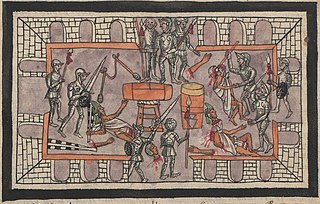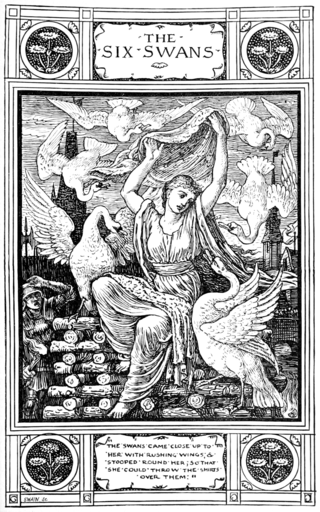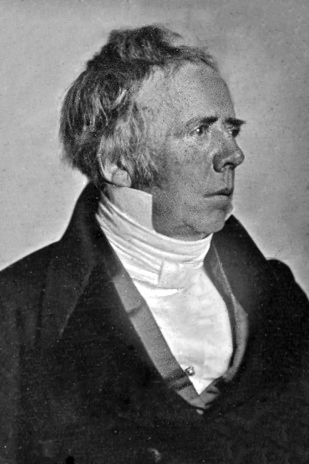
Danish is a North Germanic language from the Indo-European language family spoken by about six million people, principally in and around Denmark. Communities of Danish speakers are also found in Greenland, the Faroe Islands, and the northern German region of Southern Schleswig, where it has minority language status. Minor Danish-speaking communities are also found in Norway, Sweden, the United States, Canada, Brazil, and Argentina.

Odense is the third largest city in Denmark and the largest city on the island of Funen. As of 1 January 2024, the city proper had a population of 183,763 while Odense Municipality had a population of 209,078, making it the fourth largest municipality in Denmark. Eurostat and OECD have used a definition for the Metropolitan area of Odense, which includes all municipalities in the Province of Funen, with a total population of 504,066 as of 1 July 2022.

Roger Bacon, also known by the scholastic accolade Doctor Mirabilis, was a Polymath, a medieval English philosopher, Scientist, Theologian and Franciscan friar who placed considerable emphasis on the study of nature through empiricism. Roger Bacon is considered one of the greatest Polymaths of the Medieval Period, he intertwined his Catholic faith and scientific thinking.

Year 1520 (MDXX) was a leap year starting on Sunday of the Julian calendar.

Year 1525 (MDXXV) was a common year starting on Sunday of the Julian calendar.

Skanderborg is a town in Skanderborg Municipality, Denmark. It is situated on the north and north eastern brinks of Skanderborg Lake and there are several smaller ponds and bodies of water within the city itself, like Lillesø, Sortesø, Døj Sø and the swampy boglands of Eskebæk Mose. Just north of the town on the other side of Expressway E45, is the archaeologically important Illerup Ådal. Over time, the town has grown into a suburb of Aarhus to the north east, connected by the urban areas of Stilling, Hørning and Hasselager.

Harald Høffding was a Danish philosopher and theologian.

John, also known as Hans, was a Scandinavian monarch who ruled under the Kalmar Union. He was King of Denmark from 1481 to 1513, King of Norway from 1483 to 1513, and King of Sweden from 1497 to 1501. Additionally, from 1482 to 1513, he held the titles of Duke of Schleswig and Holstein, which he governed jointly with his brother, Frederick.

Johann Gustav Bernhard Droysen was a German historian. His history of Alexander the Great was the first work representing a new school of German historical thought that idealized power held by so-called "great" men.

A kobold is a general or generic name for the household spirit in German folklore. A hausgeist.

Francis James Child was an American scholar, educator, and folklorist, best known today for his collection of English and Scottish ballads now known as the Child Ballads. Child was Boylston professor of rhetoric and oratory at Harvard University, where he produced influential editions of English poetry. In 1876 he was named Harvard's first Professor of English, a position which allowed him to focus on academic research. It was during this time that he began work on the Child Ballads.

Joseph and Asenath is a narrative that dates from between 200 BCE and 200 CE. It concerns the Hebrew patriarch Joseph and his marriage to Asenath, expanding the fleeting mentions of their relationship in the Book of Genesis. The text was translated widely, including into Amharic, Arabic, Armenian, Early Modern German, Latin, Middle English, Old French, Romanian, Serbian and Syriac.

The Sixth and Seventh Books of Moses is an 18th- or 19th-century magical text allegedly written by Moses, and passed down as hidden books of the Hebrew Bible. Self-described as "the wonderful arts of the old Hebrews, taken from the Mosaic books of the Kabbalah and the Talmud", it is actually a grimoire, or text of magical incantations and seals, that purports to instruct the reader in the spells used to create some of the miracles portrayed in the Bible as well as to grant other forms of good fortune and good health. The work contains reputed Talmudic magic names, words, and ideograms, some written in Hebrew and some with letters from the Latin alphabet. It contains "Seals" or magical drawings accompanied by instructions intended to help the user perform various tasks, from controlling weather or people to contacting the dead or Biblical religious figures.

"The Six Swans" is a German fairy tale collected by the Brothers Grimm in Grimm's Fairy Tales in 1812. It is of Aarne–Thompson type 451, commonly found throughout Europe. Other tales of this type include The Seven Ravens, The Twelve Wild Ducks, Udea and her Seven Brothers, The Wild Swans, and The Twelve Brothers. Andrew Lang included a variant of the tale in The Yellow Fairy Book.

George Lyman Kittredge was a professor of English literature at Harvard University. His scholarly edition of the works of William Shakespeare was influential in the early 20th century. He was also involved in American folklore studies and was instrumental in the formation and management of the Harvard University Press. One of his better-known books concerned witchcraft in England and New England.

Hans Christian Ørsted was a Danish physicist and chemist who discovered that electric currents create magnetic fields, which was the first connection found between electricity and magnetism. Oersted's law and the oersted unit (Oe) are named after him.

Jacob the Dacian was a Danish-born Franciscan friar. He achieved fluency in eight languages and fame among the indigenous people of Michoacán as a righteous and helpful man toward his flock. His relics, now lost, were kept for a long time by the indigenous people of Tarécuato who still celebrate his birthday every year. Jacob has been identified as a son of King John of Denmark.

Esbjerg is a seaport city and seat of Esbjerg Municipality on the west coast of the Jutland peninsula in southwest Denmark. By road, it is 71 kilometres (44 mi) west of Kolding and 164 kilometres (102 mi) southwest of Aarhus. With an urban population of 71,505 it is the fifth-largest city in Denmark, and the largest in West Jutland.
The following is a timeline of the history of the city of Aarhus, a city in central Denmark.
Bertil Almgren was a Swedish archaeologist and the son of Oscar Almgren, the country's first archaeology professor. Following Sune Lindqvist, he was a professor at Uppsala University from 1965 to 1984.

















